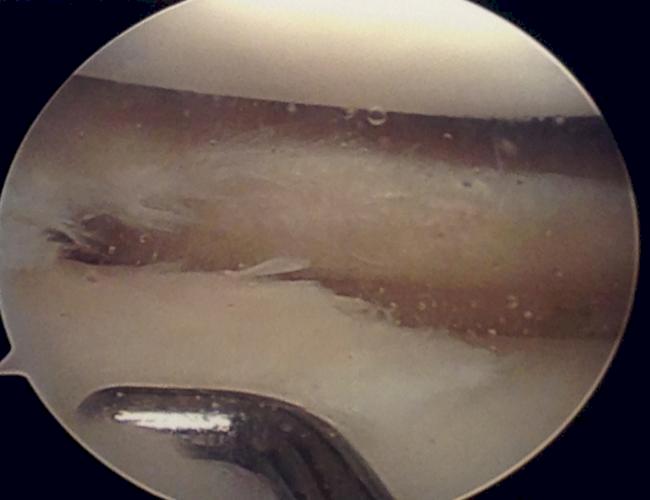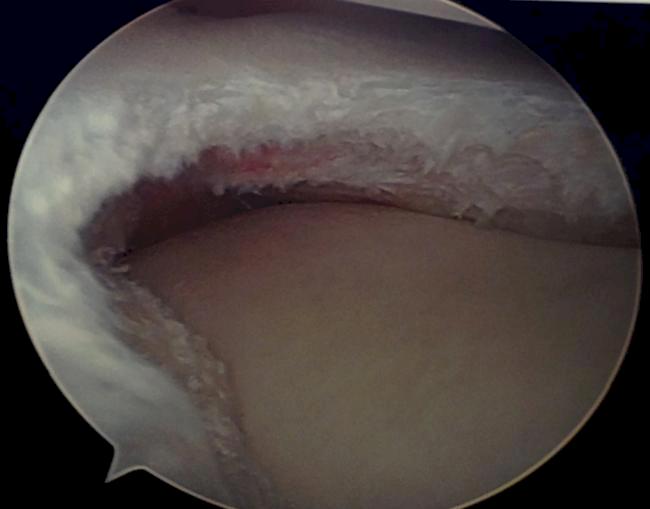Hi CFers! Dr. Thomas Greenwald here with the Sports Docs’ Weekly Blitz, writing about one of the most common injuries seen in orthopedics: meniscal tears.
Three bones meet to form your knee joint; the thigh bone (femur), shinbone (tibia), and knee cap (patella). Between the femur and tibia there are two wedge-shaped pieces of cartilage. These are rubbery and tough, and act as a "shock absorber" for the joint. They also help to stabilize the knee. Meniscus can be torn during sporting activities, including twisting maneuvers on a weight-bearing knee or during direct contact. The injury is more common in males than females and can be associated with ligamentous injury including an ACL tear.
Some athletes feel a "pop" when the injury occurs but often an athlete thinks the injury is relatively minor and keeps playing. A few days later the knee can gradually become more stiff, swollen and painful. There can be a catching or locking sensation or a "giving way" of the knee. Physical exam shows swelling and tenderness along the joint line, loss of knee motion and there can be a "click"or a "clunk" with straightening and rotation of the knee. Imaging tests can help make the diagnosis. X-Rays rule out other causes of knee pain (arthritis or fracture), and sometimes an MRI is obtained, which confirms the diagnosis.
Treatment depends upon the type of meniscal tear, it’s size and location, and associated ligamentous injuries. Frequently surgical treatment is necessary. This involves knee arthroscopy, one of the most commonly performed surgical procedures in the U.S. (well over 1 million per year). This is an outpatient procedure in which a miniature camera is inserted through a small incision into the knee. It gives a clear view of the inside of the knee and working instruments can then be inserted to trim or repair the tear.
A partial meniscectomy is done most often, with the damaged tissue being trimmed away. A meniscal repair is done if possible, with the torn pieces being sutured together. A meniscal repair takes longer to recover from, as the meniscus must heal back together. A meniscectomy requires approximately 3-4 weeks for recovery whereas a meniscal repair can take up to 3-4 months. Rehabilitation can typically be carried out at home, although physical therapy may also be utilized.
The photos below show a typical lateral (outside of the knee) meniscal tear, before and after trimming. In the left photo, behind the probe one can see the flap of cartilage which can get caught in the joint and cause pain.


My partners (Dr. Buck and Dr. Warme) and I treat meniscal tears quite frequently, including in our ISU athletes and in our central Iowa area high school athletes, as well as in our "weekend warrior" patients. As orthopedic surgeons with sports medicine expertise, we have a great deal of experience in getting athletes back to competing (and patients back to their normal lives) as soon as safely possible.
Hopefully none of you will ever experience a knee injury or sustain a meniscal tear, but if you do feel free to give us a call.
Until next week, Go Cyclones!





